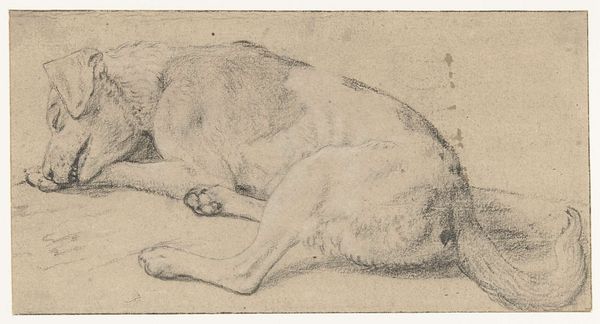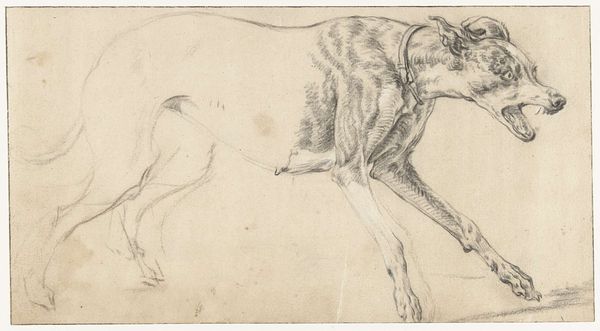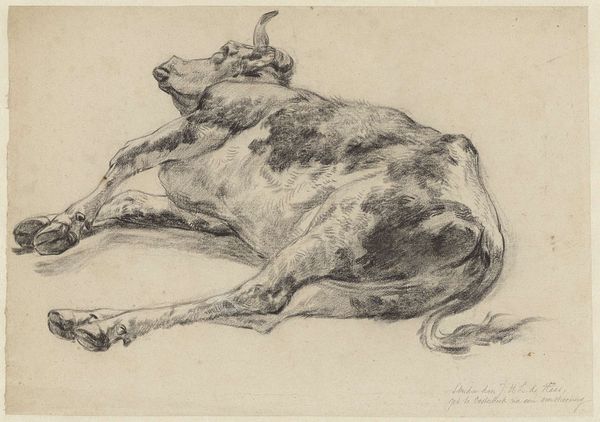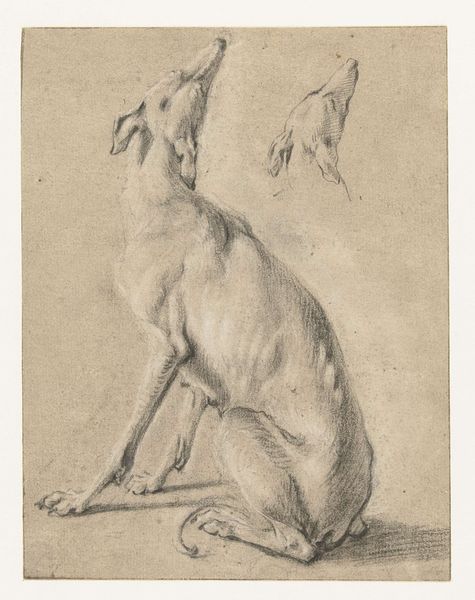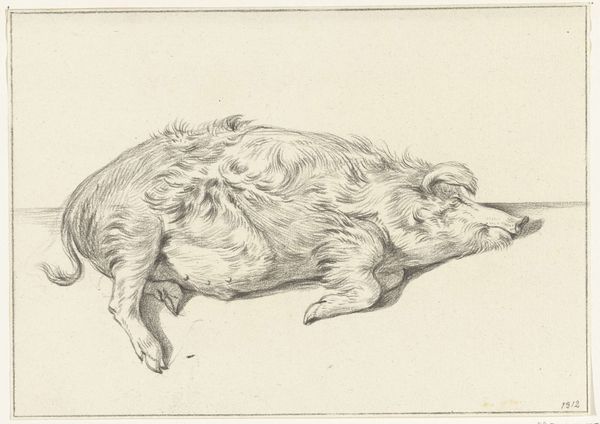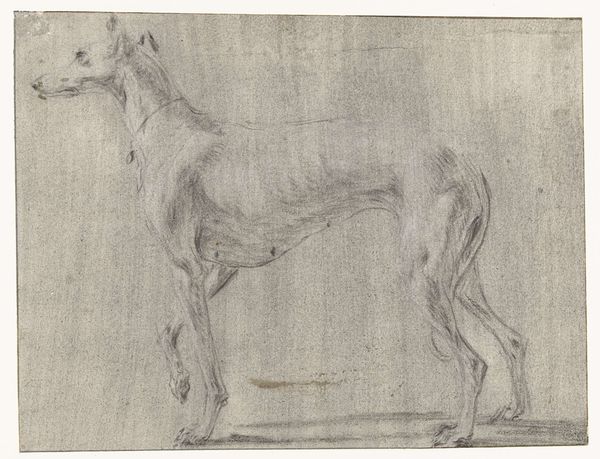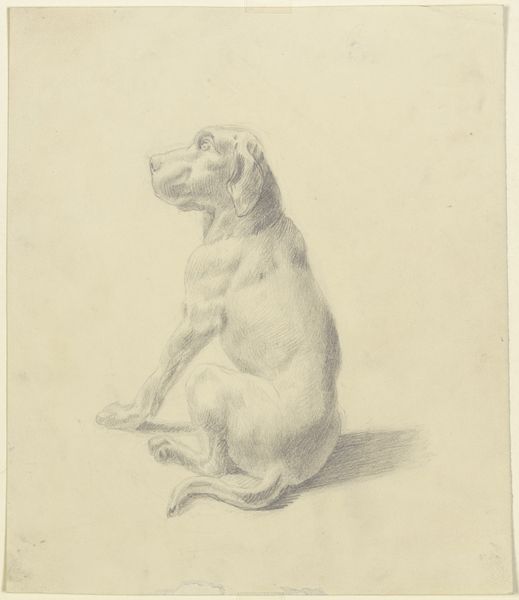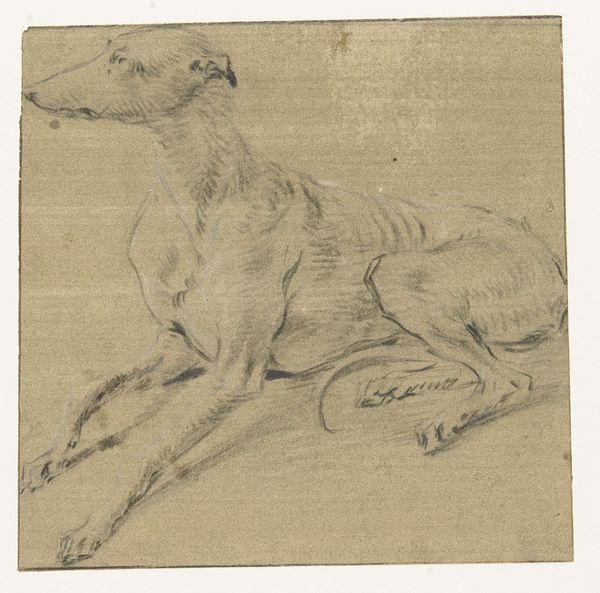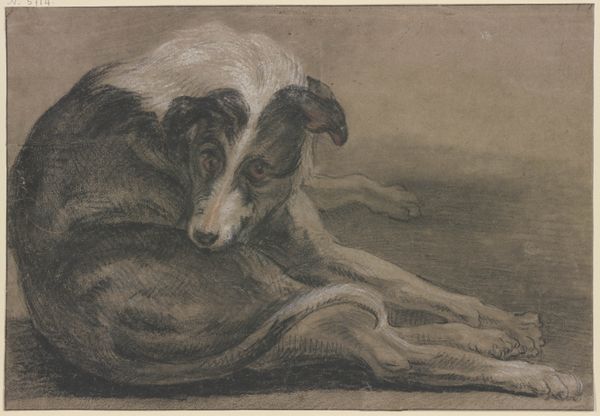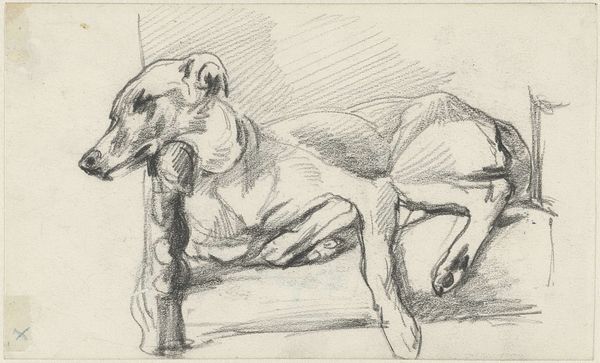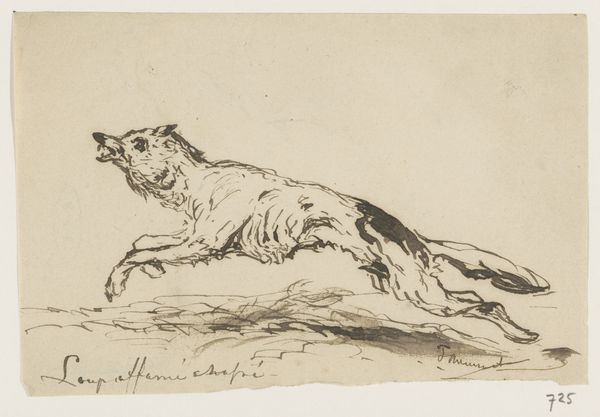
drawing, paper, pencil
#
drawing
#
dutch-golden-age
#
pencil sketch
#
landscape
#
charcoal drawing
#
figuration
#
paper
#
pencil drawing
#
pencil
#
realism
Dimensions: height 123 mm, width 188 mm
Copyright: Rijks Museum: Open Domain
Editor: Here we have "Liggende hazewind," a pencil drawing by Johan le Ducq, created sometime between 1639 and 1677. I find the pose so elegant, even in its simplicity. The dog is clearly relaxed, but alert. What do you see in this piece? Curator: What strikes me is the symbol of domesticity represented by the greyhound. It transcends merely being a pet. In the 17th century, these animals, meticulously bred, became potent symbols of status and aristocracy, particularly within the Dutch Golden Age. What might this dog represent, gazing upwards? Editor: Class, maybe? Loyalty? I hadn’t considered its upward gaze. Curator: Yes, perhaps. But also think about visual storytelling. Le Ducq employs the greyhound to invoke qualities the patron may have wished to associate with themselves—watchfulness, fidelity, and a certain refinement. Consider the upward gaze – could it signify hope, aspiration, or perhaps even divine connection, as dogs were also associated with the afterlife? Editor: That's fascinating. The way a simple sketch can hold so many layers of meaning. So, by studying animal representations like this, can we better understand the cultural values and aspirations of people at that time? Curator: Precisely. And notice the restraint in the drawing itself. It is less about ostentatious display, more about intimate connection. This piece isn’t just a portrait of a dog; it’s a portrait of values, subtly encoded within the image itself. It shows a connection with a beloved animal in a way we see today. Editor: That is a great perspective; thank you! Curator: Indeed. It seems, ultimately, we can see how animals can unlock shared cultural memory.
Comments
No comments
Be the first to comment and join the conversation on the ultimate creative platform.
